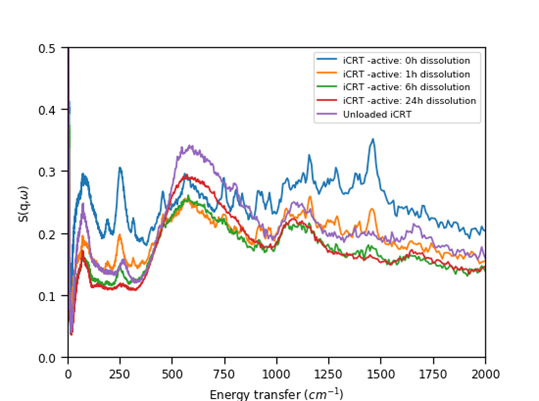"Access to the state-of-the-art facilities and associated expertise at ISIS Neutron and Muon Source really allowed us to evaluate our materials to a level that we would never normally have considered. It has provided us with a wealth of extra information and knowledge that no doubt will give a boost to the development and commercialisation of Lucideon's iCRT technology platform."
Mark Cresswell, Lucideon Ltd
This work was featured as an STFC innovation case study, and the pdf version can be downloaded below.
 STFC ISIS Case study - Lucideon - March 2022 FINAL.pdf
STFC ISIS Case study - Lucideon - March 2022 FINAL.pdf
Challenge
Encapsulation, protection and controlled release of active ingredients are critical aspects of product function in an array of industries, including pharmaceuticals, consumer products and agriceuticals. Lucideon are developing a novel platform material, Inorganic Controlled Release Technology (iCRT) which can bring unique functional properties, benefits and differentiation to products.
One of the commercial interests of Lucideon is the use of iCRT as a nanoporous matrix material within which active ingredients can be encapsulated and then subsequently released at a predetermined and designable rate. Encapsulation of active ingredients at the nanoscale can bring real benefits in terms of controlling release rates, enhancing active dissolution rates and achieving high loading levels, but the analytical characterisation of these materials can be challenging.
Solution
To better understand and develop the iCRT platform technology, Lucideon consulted STFC's materials science experts and it was recommended that the capabilities of ISIS Neutron and Muon Source could help. The team at ISIS suggested that Inelastic Neutron Scattering (INS) might be an effective way of helping Lucideon to characterise its iCRT materials and provide valuable information to aid commercialising this technology. INS IS able to measure the vibrational modes of any compound, especially hydrogenous components in a chemical system, and it was predicted that INS could help to determine the amounts of the active ingredients bound within the inorganic iCRT materials.
Through the ISIS industrial access ICRD route, Lucideon was granted a day of neutron beamtime at the ISIS Tosca instrument. A series of active-loaded iCRT materials were designed and a programme of work to evaluate the encapsulation and release of the active ingredient was carried out using INS. The results obtained by this project correlated well with previous dissolution studies and provides confidence that the INS analysis can reflect active release similar to that seen when measured using dissolution studies.

Figure 1 – The impact of Different Dissolution Times on Inelastic Neutron Scattering Data of iCRT particles.
Benefits
The main benefit of this collaboration is that it enabled Lucideon's iCRT materials to be assessed in a new way and provided answers to questions that previously could not have been answered using standard methods. The real value of the INS measurements in this instance is that it shows the removal of the active ingredient from the iCRT particles so that it can no longer be detected. With more development of the experimental procedure and repetition on a broader number of samples with different active ingredients, the INS data may provide something which dissolution cannot - confirmation that the active ingredient has been completely released from the iCRT particles. In this project, only one active ingredient was studied, but further development to validate this method as useful for a range of different active pharms will demonstrate its broad applicability. This will be a key piece of evidence to support the future development of the iCRT technology platform for pharmaceutical applications and, ultimately, increase the speed to market.
Research Team:
Gilda Gasparini, Mona Sarter, Svemir Rudic, Graham Appleby, Victoria Garcia Sakai, Mark Cresswell
